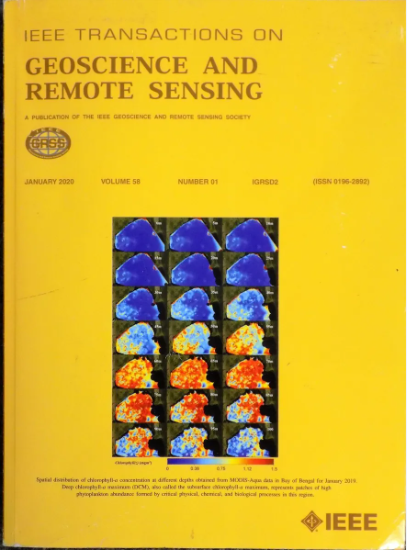用于 HSI 和激光雷达数据融合分类的多级注意动态尺度网络
IF 7.5
1区 地球科学
Q1 ENGINEERING, ELECTRICAL & ELECTRONIC
IEEE Transactions on Geoscience and Remote Sensing
Pub Date : 2024-09-09
DOI:10.1109/TGRS.2024.3456754
引用次数: 0
摘要
利用多模态数据进行土地利用/土地覆被分类已引起越来越多的关注。对于高光谱图像(HSIs)和光探测与测距(LiDAR)数据来说,两者的结合可以使分类更加准确和稳健。然而,如何有效利用它们各自的优势并将其与分类任务相结合,仍然是一个具有挑战性的问题。本文提出了一种多级注意动态尺度网络(MADNet)。首先,在特征提取阶段,将两种模态分为两个不同尺度的分支,然后将其输入卷积神经网络(CNN)以学习浅层特征。然后,考虑到 HSI 的特点,设计了一个具有低级关注度的光谱角度关注模块(SAAM),以突出与补丁中心像素具有相似光谱的周围像素。然后,提出了动态尺度选择模块(DSSM),通过像素相似性分析为补丁筛选合适的尺度。接下来,结合变换器和 CNN,设计了全局-局部交叉注意模块(GLCAM)来研究融合的深层次多模态特征。与普通变换器不同的是,GLCAM 采用了距离加权算子来减少远距离冗余,从而有效减少误分类。在三个成对的 HSI 和 LiDAR 数据集上进行的广泛实验表明,与现有方法相比,所提出的 MADNet 具有一定的优势。本文章由计算机程序翻译,如有差异,请以英文原文为准。
Multilevel Attention Dynamic-Scale Network for HSI and LiDAR Data Fusion Classification
Land use/land cover classification with multimodal data has attracted increasing attention. For hyperspectral images (HSIs) and light detection and ranging (LiDAR) data, the combination of them can make the classification more accurate and robust. However, how to effectively utilize their respective strengths and integrate them with the classification task is still a challenging problem. In this article, a multilevel attention dynamic-scale network (MADNet) is proposed. First, in the feature extraction stage, the two modalities are divided into two branches with different scales, which are then fed into the convolutional neural networks (CNNs) to learn shallow features. Then, considering the characteristics of the HSI, a spectral angle attention module (SAAM) with low-level attention is designed to highlight surrounding pixels that have similar spectra to the central pixel of the patch. After that, a dynamic-scale selection module (DSSM) is proposed to screen an appropriate scale for the patches by pixel similarity analysis. Next, combining the Transformer and the CNN, a global-local cross-attention module (GLCAM) is devised to investigate the fused deep-level multimodal features. Distinct from the vanilla Transformer, the GLCAM deploys a distance-weight operator to decrease the redundancies at long distances and effectively reduce misclassifications. Extensive experiments on three paired HSI and LiDAR datasets demonstrate that the proposed MADNet has certain advantages over the existing methods.
求助全文
通过发布文献求助,成功后即可免费获取论文全文。
去求助
来源期刊

IEEE Transactions on Geoscience and Remote Sensing
工程技术-地球化学与地球物理
CiteScore
11.50
自引率
28.00%
发文量
1912
审稿时长
4.0 months
期刊介绍:
IEEE Transactions on Geoscience and Remote Sensing (TGRS) is a monthly publication that focuses on the theory, concepts, and techniques of science and engineering as applied to sensing the land, oceans, atmosphere, and space; and the processing, interpretation, and dissemination of this information.
 求助内容:
求助内容: 应助结果提醒方式:
应助结果提醒方式:


